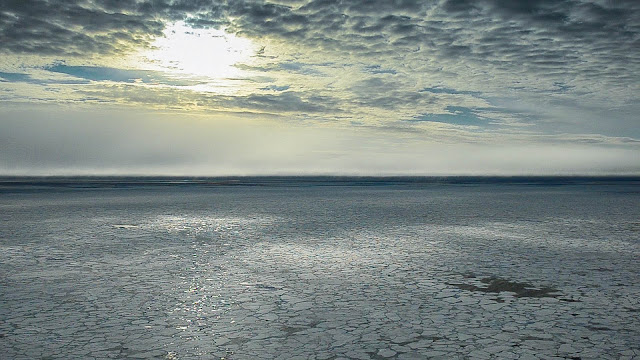For many, 2013 has been the year of “The Great Deceleration“. Emerging economies worldwide are lowering their expectations. The reasons behind this slow down might be deeper than simply the international economic downturn. The role of raw materials in emerging economies, in combination with short-sighted policy making, made the current situation all but inevitable.
Let’s start with the most obvious example: China. The Middle Empire will be lucky enough if it is currently growing at its official target of 7.5%, which in itself is a far cry from the 10.4% of 2010, and still further away from the 14.2% of 2007. The same is happening to the other BRICS, India (around 5%), Brazil and Russia (around 2.5%) will grow hardly half of what they’ve become used to. Of course, these growth rates might sound miraculous compared to the slothful richer economies, but they represent the slowest speed of the emerging economies in a decade except for the period surrounding the international collapse in 2009. Gone are the days of record-breaking speed in growth rates, and emerging economies’ capacity to play catch-up with their richer counterparts will be limited.
How can this deceleration be explained? If the emerging economies were able to rapidly recover from the financial world crisis of 2009, how is one to understand this relapse? The answer lies precisely in their model of growth. To better understand the height and decline of their boom, it is necessary to consider the role of commodities in some of these economies.
At least, that is definitely the case of South America. According to the Economic Commission for Latin America (ECLAC), South-American economies enjoyed a period of continued rise of commodities prices from the beginning of the century, thanks to demand from other industrializing economies, such as China. These high prices boosted the growth of the region and gave even more incentives to specialize in the export of raw materials. International specialization in commodities can be highly damaging to local economies, both because of South America’s subsequent immersion in globalization, as well as the socio-economic development of these societies.
Starting with the dangers of the dependency on commodity exports, an obvious problem is their volatile price. As extraordinary as they rise, they can collapse just as easily, taking with them the income of the economy that exports them. This makes them a source of instability, reducing their resilience to international economic turbulence. As the demand of raw materials declined, the bubble of their prices bursts This has been the most obvious reason for the deceleration of most commodity-specialized economies.
However, there is more to it than collapsing prices. The focus on commodities endorses a type of structure of national and regional economies that is neither beneficial to their international competitiveness, nor to their internal development.
Firstly, it promotes a weak business chain, with big commodities-exporting companies not incorporating other transformative industries in the process. They do not enhance regional value chains, the key for a beneficial participation in globalization.
Secondly, such specialisation promotes a concentration of large enterprise, crowding-out small-scale companies. At the same time, raw materials business is a low labour-intensive sector compared to other sectors, such as manufacturing. In contrast to other sectors, they are a very limited source of employment. With labour being a key factor in any coherent strategy of economic development, this is a fundamental problem that goes beyond mere export numbers.
Thirdly, it tends to inflate the local currency’s exchange rate, thereby making exports other than the dominant commodities more expensive, and imports cheaper. This “Dutch disease”, as it is known, enhance the concentration on this kind of exports and so the country become finally completely dependent on their primary product exports.
In other words, a commodity-focused exporting economy is not necessarily favourable to socio-economic development. It does not promote significant employment, nor does it guarantee a solid competitive position within the international economy. As a result, it has creates significant weakness, and one that South-American and other emerging countries are suffering from right now.
The verdict would be even more damning if based on other than economic criteria: from a social perspective, commodity focused approaches hurt a wide range of issues such as education, gender equality, and quality of life. For instance, as it requires a qualified labour force, this model will not promote higher education of the workforce; neither high salaries nor good work conditions are encouraged by extractive industries.
It may seem odd, therefore, that political discourse -both from the left and the right- often focus, positively, on the sovereign use of commodities. A topical example is of course Venezuela, i.e. the country with the highest dependence on commodities income, followed by Chile. There are three broad explanations for such destructive political behaviour: short-term economic imperative, political usefulness, and systemic pressures.
Economically, commodities are easily accessible, typically not requiring a highly educated workforce or significant state investments, as financing nowadays can be easily found at an international level. They quickly produce short-term gains, unlike more sophisticated sources for economic growth.
This also explains their political attraction: the boosting of the primary sector often falls neatly into political cycles, offering quick results at the cost of long-term problems. Moreover, the idea of resource independence has historically been an important issue in most societies, and still explains a lot of economically dubious choices governments all over the world make. Natural resources are an easy source of income, especially attractive for “developing” countries. Indeed, they might not require difficult structural adjustments, or large constant investment. Hence, they are often seen as a low cost rapid development.
“Systemic pressures” combines a series of issues related to the allocation of political and economic resources work in practice. These systemic dynamics constitute another dimension of the problem that should not be ignored in the analysis of the actors involved. This includes issues such as corruption –commodities are relatively easily accessed through bribing officials– as well as international network pressures to play the globalisation game.
These factors have allowed the resource curse to be repeated over and over again, especially because of exacerbating conditions around the globe. In the specific case of South America, the role of the emerging China has been such a condition.
In the context of “shifting wealth” to Asia, an important part of the industrial production has moved to this region, especially to China. From there, increased demand for raw material emerged and as a result has been one of the main reasons behind the rising prices of commodities in South America. Exports from Latin America to China tripled from 2000 to 2007, simultaneously to China’s direct investment multiplication in the region. Quite representative of this optimistic trade attitude was the forum “Going to Latin America” that was held last month in Guangdong.
Furthermore, business with China has been enhanced by the desire of emancipation from the Western influence. Whether this desire materializes through direct anti-United States discourse (such as the case of Bolivia), or whether this emancipation happens through a pragmatic attitude of diversification of allies, there is a powerful pull away from dependence on Europe and the United States. The result has been the growing presence of China and its commodities demands in South America.
For both left and right oriented governments, China is seen as a pragmatic actor, mainly relevant because of its economic weight. Besides some isolated complaints of interference, South Americans do not tend to see it as a threat. South American governments seem not worried about its global ambitions, and from a political perspective China has indeed treaded lightly thus far.
The main concern in Latin American capitals has been the deceleration of the Chinese economy during this past year, and its direct effects on local economies. However, the real problems lie deeper. China’s role in South American economies commodity dependence has a dark, destructive edge, and should be recognised as such. Treating development as a short term strategy will only have damaging long term consequences.


